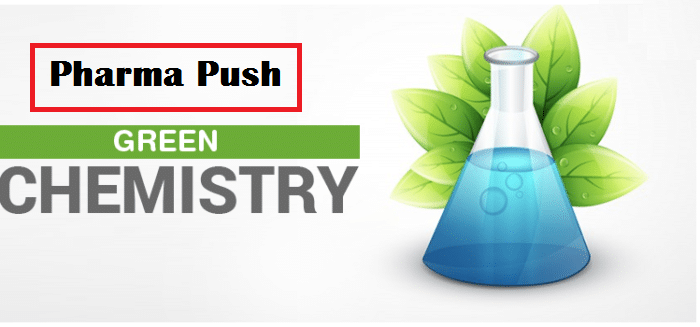Characterization and quantification of drugs are critical aspects of pharmaceutical analysis, ensuring the safety, efficacy, and quality of pharmaceutical products. Various instrumental techniques are employed for these purposes, offering high sensitivity, selectivity, and precision. This comprehensive review will discuss several key instrumentation methods used in drug analysis, covering both qualitative and quantitative aspects. The techniques range from traditional methods to modern, advanced instrumental approaches, highlighting their principles, applications, advantages, and limitations.
1. Introduction: Pharmaceutical Analysis and Drug Characterization
Pharmaceutical analysis is the discipline that involves the development and application of techniques to ensure the quality, safety, and efficacy of pharmaceutical products. Drug characterization encompasses the identification and understanding of the physicochemical properties of a drug substance, including its chemical structure, polymorphism, solubility, stability, and other relevant attributes.
2. Classical Techniques in Pharmaceutical Analysis
2.1. Titrimetry and Gravimetry:
- Titrimetry:
- Definition: Titrimetry, or titration, is a technique in which a solution of known concentration (titrant) is slowly added to a solution of the analyte until the reaction between the two is complete. The point at which the reaction is complete is called the endpoint, and it is usually detected using an indicator or some other method.
- Principle: The principle behind titrimetry is based on the stoichiometry of the reaction between the titrant and the analyte. By measuring the volume of titrant required to reach the endpoint, one can determine the concentration of the analyte.
- Common Types:
- Acid-Base Titration: Involves the reaction between an acid and a base.
- Redox Titration: Involves a transfer of electrons between reactants.
- Complexometric Titration: Involves the formation of a complex between the analyte and a titrant.
- Gravimetry:
- Definition: Gravimetry involves the determination of the quantity of a substance by measuring its mass or the mass of a product formed during a chemical reaction.
- Principle: The principle of gravimetry is based on the conversion of the analyte into a stable, easily isolatable compound. The mass of this compound is then determined, and from that, the original concentration of the analyte can be calculated.
- Common Types:
- Precipitation Gravimetry: Involves the formation of a solid precipitate from the reaction of the analyte with a suitable reagent.
- Volatilization Gravimetry: Involves the conversion of the analyte into a volatile compound, which is then weighed.
- Example: In precipitation gravimetry, if you want to determine the amount of chloride ions in a solution, you could add silver nitrate (AgNO3) to precipitate silver chloride (AgCl). The mass of the precipitate can then be measured to determine the original concentration of chloride ions.
2.2. Spectrophotometry:
Spectrophotometry is a technique used in analytical chemistry to measure the concentration of a substance in a solution by analyzing how much light is absorbed or transmitted by the sample. This method is based on the principle that different substances absorb light at characteristic wavelengths. Spectrophotometry is widely used for both qualitative and quantitative analysis in various fields, including chemistry, biochemistry, environmental science, and biology.
Join TelegramHere’s an overview of the key aspects of spectrophotometry:
You May Like: Overview on Green Chemistry
- Principle:
- When light passes through a sample, some of it is absorbed by the molecules present in the sample. The amount of light absorbed is directly proportional to the concentration of the absorbing substance.
- The basic instrument used for spectrophotometry is a spectrophotometer, which measures the intensity of light at different wavelengths.
- Components of a Spectrophotometer:
- Light Source: Provides a beam of light that passes through the sample.
- Monochromator: Separates the light into its individual wavelengths.
- Sample Holder or Cuvette: Contains the sample through which light passes.
- Photodetector: Measures the intensity of light after it passes through the sample.
- Output Device: Displays or records the results.
- Working Steps:
- A light source emits light, which is then passed through a monochromator to select a specific wavelength of light.
- The selected wavelength is directed through the sample in a cuvette.
- The photodetector measures the intensity of light that passes through the sample.
- The spectrophotometer calculates the absorbance or transmittance of the sample based on the detected light intensity.
- Beer-Lambert Law:
- The relationship between the concentration of a substance in a solution and the amount of light it absorbs is described by the Beer-Lambert Law. The law is expressed as A = εcl, where A is absorbance, ε is the molar absorptivity (or molar extinction coefficient), c is the concentration, and l is the path length of the sample.
- Applications:
- Quantitative Analysis: Spectrophotometry is commonly used to determine the concentration of a specific analyte in a sample.
- Qualitative Analysis: It can be used to identify substances based on their absorption spectra.
- Biological and Biochemical Assays: Used in various biological and biochemical experiments, such as enzyme kinetics and nucleic acid quantification.
Spectrophotometry is a versatile and widely employed technique, providing accurate and reliable results in various scientific and industrial applications. It is particularly valuable in the fields of chemistry and biology for its ability to quickly and precisely quantify the amount of a specific substance in a sample.
2.3. Chromatography:
Chromatography is a laboratory technique used for the separation of mixtures into their individual components. It relies on the differential distribution of the components in a sample between a stationary phase and a mobile phase. The mobile phase carries the sample through the stationary phase, and as the components have different affinities for the stationary and mobile phases, they move at different rates, leading to separation.
There are various types of chromatography techniques, each tailored for specific applications. Some of the common types include:
You May Like: Significance of quality control and quality assurance in pharmaceutical Industries
- Gas Chromatography (GC): In GC, the mobile phase is a gas, and the stationary phase is a liquid or solid coated onto a solid support. It is widely used for separating and analyzing volatile compounds.
- Liquid Chromatography (LC): LC uses a liquid mobile phase and a stationary phase, which can be a liquid or solid. High-Performance Liquid Chromatography (HPLC) is a popular form of liquid chromatography with high pressure used to move the sample through the column faster.
- Thin-Layer Chromatography (TLC): In TLC, a thin layer of stationary phase is coated on a glass or plastic plate, and the sample is applied as a spot. The plate is then placed in a solvent, which moves up the plate, separating the components.
- Ion Exchange Chromatography: This technique separates ions based on their charge. A stationary phase with charged groups attracts and holds ions with opposite charges, leading to separation.
- Size Exclusion Chromatography (SEC): Also known as gel filtration chromatography, SEC separates molecules based on their size. Larger molecules move through the column faster than smaller ones because they don’t enter the pores of the stationary phase.
- Affinity Chromatography: This technique exploits specific interactions between a biomolecule of interest and a ligand immobilized on the stationary phase. It is often used for purifying proteins and other biomolecules.
Chromatography is widely used in various fields, including chemistry, biochemistry, pharmaceuticals, environmental science, and food analysis, among others. It is a powerful tool for separating and analyzing complex mixtures, allowing scientists to identify and quantify individual components within a sample.
3. Hyphenated Techniques
3.1. HPLC-MS and GC-MS:
Hyphenation of chromatography with mass spectrometry enhances both separation and detection capabilities, allowing for highly sensitive and specific analysis.
3.2. LC-NMR:
LC-NMR combines the separation power of liquid chromatography with the structural elucidation capabilities of NMR spectroscopy, providing comprehensive information about drug compounds.
3.3. LC-IR:
Coupling liquid chromatography with infrared spectroscopy enables simultaneous separation and structural characterization, making it useful for complex mixtures.
4. Emerging Technologies
4.1. Microfluidics:
Microfluidic devices offer miniaturized platforms for drug analysis, providing advantages such as reduced sample volumes, rapid analysis, and portability.
Microfluidics is a multidisciplinary field that deals with the behavior, manipulation, and control of fluids in microscale environments. It involves the study and application of systems that handle small volumes of fluids, typically in the microliter (10^-6 liters) to nanoliter (10^-9 liters) range. The small scale in microfluidics allows for precise control over fluid flow, mixing, and reactions, leading to a wide range of applications in various scientific and technological domains.
Key features and components of microfluidic systems include:
- Microchannels: These are small channels or channels with dimensions on the micrometer scale through which fluids flow. Microchannels can be designed and fabricated using various materials, including glass, silicon, and polymers.
- Lab-on-a-Chip (LOC) Devices: Microfluidic systems are often integrated into small, portable devices known as lab-on-a-chip devices. These devices can perform multiple laboratory functions, such as sample preparation, analysis, and detection, on a single chip.
- Flow Control: Microfluidic systems enable precise control over fluid flow using methods such as pressure-driven flow, electrokinetic forces, and capillary action.
- Mixing and Reactions: Microfluidics allows efficient mixing of fluids in small volumes, enabling rapid reactions and analyses. This is particularly useful in chemistry, biology, and biochemistry applications.
- Applications:
- Biomedical Applications: Microfluidics is extensively used in biology and medicine for tasks such as DNA analysis, cell sorting, and diagnostic assays.
- Chemical Synthesis: Microfluidic devices are employed for chemical reactions, synthesis of nanoparticles, and drug discovery.
- Environmental Monitoring: Microfluidics can be used for on-site monitoring of environmental samples, such as detecting pollutants or pathogens in water.
- Point-of-Care Diagnostics: Microfluidic devices are designed for use at the point of care, allowing rapid and cost-effective medical diagnostics.
- Advantages:
- Reduced Sample and Reagent Consumption: Microfluidic systems minimize the need for large volumes of samples and reagents.
- High Throughput: Despite their small size, microfluidic devices can achieve high throughput due to parallelization and automation.
- Miniaturization: The compact size of microfluidic devices makes them suitable for portable applications and reduces waste.
Microfluidics continues to advance, and ongoing research aims to develop new technologies and applications. It plays a crucial role in addressing challenges in fields ranging from healthcare and biotechnology to chemistry and environmental science.
4.2. Mass Spectrometry Imaging (MSI):
MSI allows for spatial mapping of drugs within tissues, providing valuable information about drug distribution in pharmacokinetic studies.
4.3. Surface-Enhanced Raman Spectroscopy (SERS):
SERS enhances the Raman signals of drugs, enabling highly sensitive detection and identification, even at low concentrations.
6. Conclusion
In conclusion, the characterization and quantification of drugs involve a wide array of instrumental techniques, ranging from classical methods to advanced technologies. Each technique has its advantages and limitations, and the choice of method depends on factors such as the nature of the drug, required sensitivity, and the complexity of the sample matrix. As technology continues to advance, new and innovative approaches are likely to emerge, further improving our ability to analyze and understand pharmaceutical compounds. The continuous integration of these techniques into pharmaceutical research and quality control processes ensures the development of safe and effective drug products.



Assignment pharmaceutical chemistry